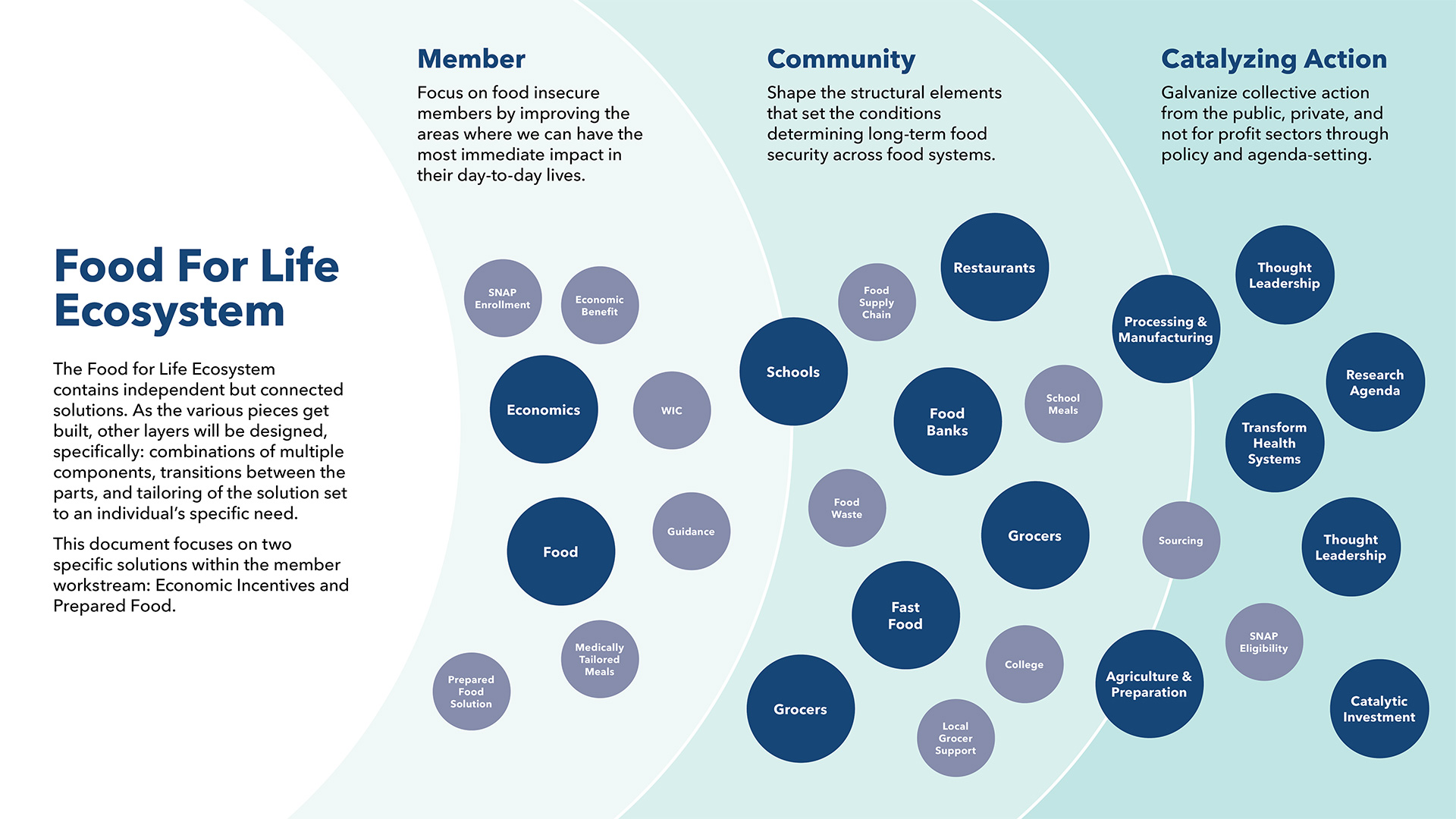

Solving for Food Insecurity
Use Kaiser Permanente’s scale and influence to help prevent people from going to bed hungry.
Many people experience deep anxiety around the considerations and tradeoffs they make every day between food, nutrition, and managing other areas of their lives. People lacking consistent access to adequate food spend about 45% more on medical care per year.1
Core to healthy eating is being able to afford – and access – healthy food. The food security landscape is complex and so our approach to solving it must be equally robust, taking into consideration economic tradeoffs, stigma, and social and culture dimensions. The team developed and deployed a system of solutions to help address food security at individual, community, and societal levels.
For the individual, ideas revolved around a two-fold strategy: increasing purchasing power and increasing access to nutritious meals. Solutions included enrolling members in Supplemental Nutrition Assistance Program [SNAP] via a text campaign, a medically tailored meals program to match nutritional needs with medical needs and Produce Rx which is a voucher for fruits and vegetables.
At the community level, KP helped organizations enroll people in need to SNAP, provide more healthy food options in food deserts, and help provide those facing higher need – like pregnant women – with access to healthy food.
At a societal level, KP advocated for food policies that help ensure programs like SNAP can be easy to connect with and continue to serve those in need.
1 out of 8 people are struggling with food insecurity in the United States

People lacking consistent access to adequate food spend about 45% more on medical care per year.
- Center for Budget and Policy Priorities, 2018